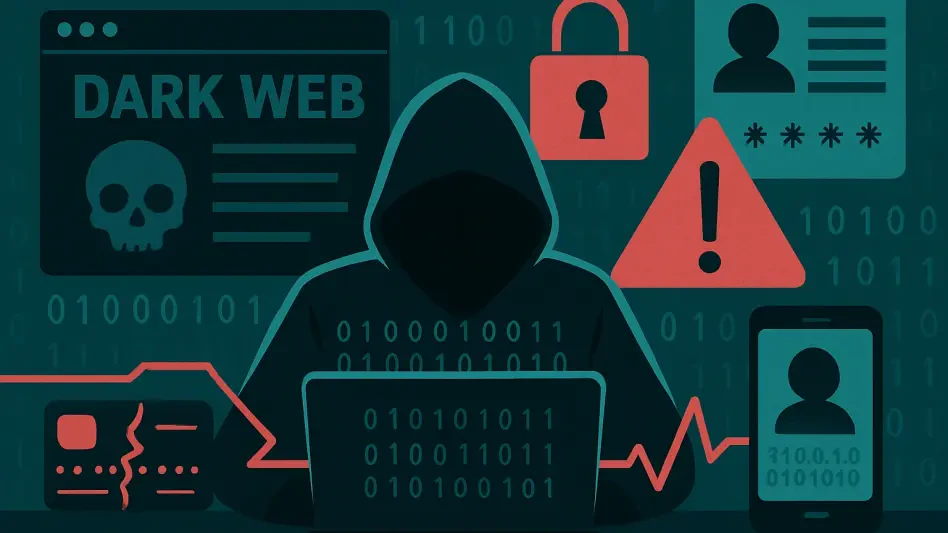In a chilling development for online security, a vast collection of stolen credentials known as Combo List 93M has surfaced on underground forums, putting millions of email accounts at risk. This enormous dataset, reportedly containing over 93 million records, has been circulating within cybercriminal communities, where it is being exploited for malicious purposes such as credential-stuffing attacks and phishing schemes. Unlike a typical data breach tied to a single organization, this list aggregates previously leaked usernames and passwords from various sources, repackaged for resale or distribution among attackers. The emergence of such a massive compilation highlights the persistent dangers of password reuse and the enduring impact of past breaches. As cybercriminals continue to leverage these lists for financial gain and identity theft, the need for heightened vigilance and robust security measures becomes more urgent than ever for users across the globe.
1. Understanding the Nature of Combo Lists
The concept of a combo list, as exemplified by the recently surfaced database with 93 million records, refers to a bundled collection of usernames and passwords harvested from multiple prior data leaks. These lists are often organized by specific domains, such as email providers, to make them more appealing to attackers targeting particular user groups. Security analysts have observed that the data within these compilations, while sometimes outdated, remains a potent tool for cybercriminals. Automated bots are frequently deployed in credential-stuffing attacks, testing these combinations across a wide array of platforms, from banking websites to e-commerce portals. The sheer volume of records in this latest list underscores the scale of the problem, as even a small percentage of valid credentials can lead to significant financial losses or privacy invasions for affected individuals. This aggregation method ensures that old data retains its dangerous potential in the hands of skilled malicious actors.
Beyond the technical aspects, the distribution of such lists on dark web marketplaces reveals a thriving underground economy focused on stolen data. These compilations are often branded with catchy names or numbers to attract buyers, indicating a level of marketing sophistication among cybercriminals. The specific focus on email credentials in this 93 million-strong dataset poses a unique threat, as email accounts often serve as gateways to other services through password recovery mechanisms. Even if the passwords included are hashed rather than plaintext, advanced hacking techniques can sometimes crack these protections. Additionally, infostealer malware contributes to the pool of data by siphoning credentials directly from compromised devices. For users, the key takeaway is that even breaches from years ago can resurface in new forms, creating ongoing risks that demand constant attention to personal security practices and awareness of evolving threats in the digital landscape.
2. Scope and Impact of the Latest Data Exposure
The scale of the dataset containing 93 million records is staggering, with alerts already being issued by identity protection services to subscribers whose information has been flagged. These notifications often specify whether only an email address or a full set of login credentials has been exposed, allowing users to prioritize their response based on the severity of the leak. The initial circulation of this list on underground forums marks a critical moment, as it signals the beginning of potential widespread misuse by attackers. Credential-stuffing campaigns, where bots systematically attempt to log into accounts using the leaked data, pose a significant risk, especially for individuals who reuse passwords across multiple services. The impact extends beyond immediate account access, as exposed emails can also be used in targeted phishing attempts designed to trick users into revealing additional sensitive information or downloading malware.
Moreover, the absence of evidence pointing to a fresh breach at major email providers offers little comfort given the nature of this aggregated data. Instead, the list appears to be a repackaged collection of older leaks, reassembled to maximize its marketability among cybercriminals. This recycling of previously exposed information illustrates a troubling reality: once data is leaked, it remains a perpetual threat, circulating indefinitely in dark web ecosystems. For users, the implications are far-reaching, as even a single exposed email address can become a vector for spam, social engineering attacks, or integration with other datasets containing corresponding passwords. The urgency to adopt protective measures cannot be overstated, as the window to mitigate damage narrows with each passing day that the data remains in circulation. Security experts emphasize that proactive steps are essential to limit the fallout from such extensive exposures.
3. Protective Measures for Affected Users
In light of the massive data exposure involving 93 million records, cybersecurity professionals have outlined critical steps for users to safeguard their accounts and personal information. The most immediate action is to change passwords for any account where credentials might have been reused, ensuring that new passwords are unique and complex. Enabling two-factor authentication (2FA) wherever possible adds an essential layer of security, making it significantly harder for attackers to gain access even if they possess the correct login details. Additionally, users are encouraged to utilize online tools that check whether their email addresses appear in known breach databases, providing a quick way to assess personal risk. Staying vigilant for phishing emails, which may exploit exposed data to appear more convincing, is another crucial precaution to avoid falling victim to secondary attacks.
Beyond these immediate actions, adopting long-term habits to enhance digital security is vital in an era where data leaks are increasingly common. Avoiding password reuse across different platforms is a fundamental principle that can drastically reduce the impact of credential-stuffing attacks. Regularly updating passwords, even for accounts not believed to be compromised, helps maintain a strong defense against evolving threats. Users should also remain cautious of unsolicited communications that request personal information or prompt clicks on suspicious links, as these often follow large-scale data exposures. By integrating these practices into daily online behavior, individuals can build resilience against the persistent dangers posed by recycled datasets. The focus must shift toward prevention and preparedness, ensuring that the damage from such leaks is minimized through consistent and informed action.
4. Long-Term Implications of Recycled Data Threats
The emergence of a dataset with 93 million records serves as a stark reminder of the enduring consequences of data breaches, even years after the initial leaks occur. Recycled credential lists, repackaged and redistributed under new names, demonstrate how cybercriminals capitalize on human tendencies like password reuse to perpetuate threats over extended periods. This practice not only sustains the profitability of stolen data in underground markets but also amplifies the risks for users who may believe that older breaches no longer pose a danger. The continuous circulation of such information on dark web forums ensures that privacy remains under siege, with attackers finding innovative ways to exploit even outdated records for financial gain or identity theft. This cycle underscores the importance of evolving security strategies to address the persistent nature of digital threats.
Furthermore, the broader implications for cybersecurity policy and user education are significant, as the scale of these aggregated lists calls for systemic changes to combat data exposure. Organizations must prioritize stronger encryption and authentication protocols to protect user information at the source, while public awareness campaigns can play a pivotal role in educating individuals about safe online practices. Governments and private entities alike face the challenge of disrupting the dark web marketplaces where such data is traded, requiring international cooperation and advanced technological interventions. For users, the lesson is clear: the digital footprint left by past breaches can resurface unpredictably, necessitating a proactive approach to personal security. Addressing these long-term threats demands a collective effort to break the cycle of data misuse and build a more secure online environment for all stakeholders in the digital ecosystem.
5. Reflecting on a Persistent Challenge
Looking back, the circulation of a dataset encompassing 93 million records highlighted a critical vulnerability in the digital landscape, where old breaches found new life through aggregation and resale. The incident served as a wake-up call, exposing the scale at which cybercriminals exploited recycled credentials for attacks like phishing and credential stuffing. It became evident that the fallout from such exposures lingered far beyond the initial leaks, affecting millions of users who remained unaware of the risks tied to their online habits. The response from identity protection services, issuing alerts to affected individuals, underscored the urgency of addressing these threats with immediate action and informed strategies.
Moving forward, the focus shifted to empowering users with actionable steps to mitigate damage and prevent future exposures. Changing passwords, enabling two-factor authentication, and monitoring for breach notifications emerged as essential practices to adopt. Beyond individual efforts, the incident prompted discussions on the need for stronger industry standards and collaborative measures to disrupt the underground trade of stolen data. By fostering greater awareness and implementing robust security frameworks, the path was paved for reducing the impact of such persistent digital threats, ensuring a safer online experience for users worldwide.








